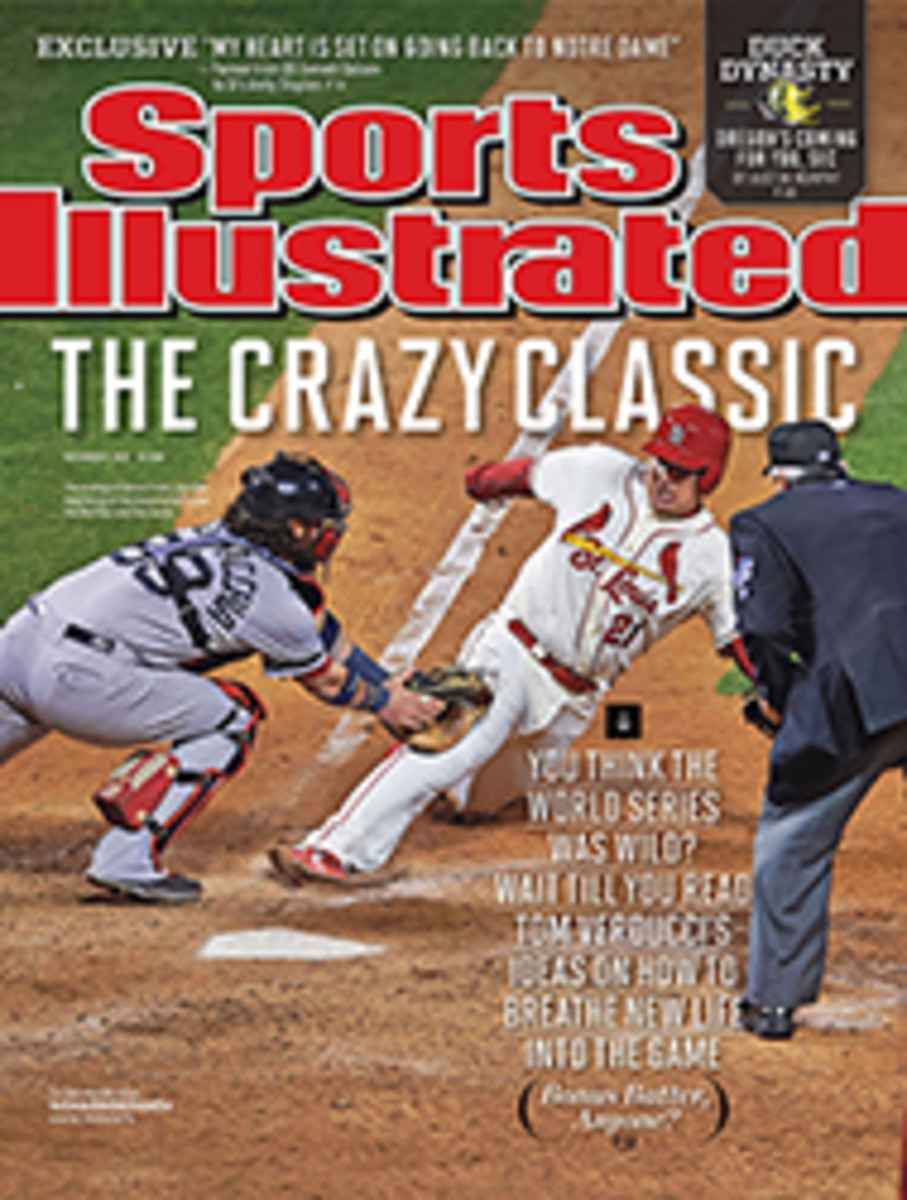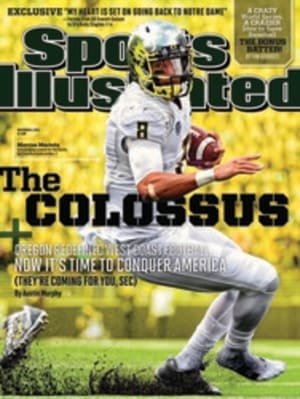
Fast-Tracking
Imagine an NFL team with a hyped young receiver—not difficult, to be sure—competing with a veteran wideout who claims he still runs crisper routes than the newbie. Now imagine that the old codger has data to back up his claim.
Eight NFL teams have signed on with a Melbourne-based company, Catapult, to provide data on players in real time during practices. From a 3.5-ounce GPS device that players wear on shoulder pads, coaches can measure their acceleration, distance covered, speed and hitting force.
The data can then be used to pinpoint a player's strengths and weaknesses. In one team's training camp Catapult data showed that one receiver was proficient at decelerating sharply, leading his coaches to call more stop routes and comebacks for him, says Gary McCoy, a scientist with Catapult. During the season another team found an offensive player with higher intensity movements to his right, indicating he was either having trouble adapting to a new position or that he was nursing an injury. His coach told Catapult that the player would be toast if that information got out. Once identified, such imbalances can be corrected.
Teams are also using the data to study the effectiveness of their own practices. For instance, the numbers show that Thursday practices with a lot of activity tend to lead to losses on Sundays and that when players stand for 80% of a practice they are more prone to tight muscles and injuries. Says Tom Myslinski, the Jaguars' strength and conditioning coach, "I'm able to take practice and break it down and put [the information] into players' at-home workouts. It helps them train more efficiently."
Even while some of the data is puzzling (why do wide receivers cover up to 17% more ground during practice—and do so at max speed 9.2% of the time more—than defensive backs?), Myslinski says this is certainly where the NFL is going. Says McCoy, "We're creating dashboards for the athlete's bodies."
BEAR MARKET
Want to stay warm in frigid conditions? Why not take a cue from a creature that lives comfortably in Arctic climes? Inspired by the configuration of a polar bear's fur, Adidas devised a new yarn for its Climawarm + performance line in which hollow synthetic fibers trap body-generated heat. The result is a soft, thick, flexible garment that provides warmth without bulk. (It also allows for sweat to easily evaporate.) Josh Gordon, Adidas's innovation director, says more inspiration is to come from nature: "The bears still have a few things they can teach us."
SIGN OF THE APOCALYPSE
A group of Bosnian fans intending to see their country's World Cup qualifier against Lithuania went to Latvia by mistake. Said one fan, "I will surely remember this stupidity [for] the rest of my life."
PHOTO ILLUSTRATION
PHOTO ILLUSTRATION BY NICOLE ZIGMONT; AARON ONTIVEROZ/THE DENVER POST/GETTY IMAGES (FIRST PLAYER); PAUL JASIENSKI/AP (SECOND, THIRD PLAYERS)
PHOTO
COURTESY OF CATAPULT SPORTS (GPS DEVICE)
PHOTO
ERECTUS/FOTOLIA.COM (BEAR)
PHOTO
CARLOS M. SAAVEDRA FOR SPORTS ILLUSTRATED (HOODIE)
HOLLOW VICTORY Adidas's Thermolite fabric uses fibers that mimic ursine fur.
PHOTO
COURTESY OF ADIDAS (FIBERS)
[See caption above]
MAP

